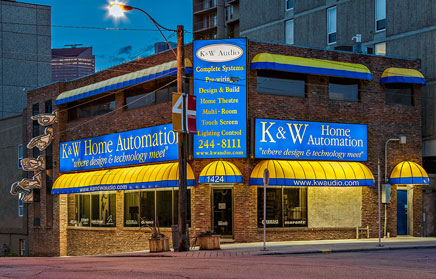Tip #27:
Music, and the stars who perform for us in concert give our lives a lift, allowing us to be transported temporarily to another world, refreshing and energizing our very being. Music has become an important and essential part of life for those who have “ears to hear”.
Our experience in listening to a variety of music makes us more critical, and at the same time more appreciative, of the live performance at it’s best. The human ear is a very sensitive organ, and can be trained to be very discerning indeed.
Those who have developed their listening skills derive great pleasure from the musical experience, and can appreciate the subtle differences which make a performance outstanding and extraordinary. These moments, though fleeting, are truly memorable. We would all like to relive these special uplifting moments in our lives.
Today we can enjoy the marvel of an orchestral performance in surroundings which have been designed specifically for the purpose of bringing enjoyment and satisfaction to the concert hall patron, while state of the art electronics and lighting complete the experience. Calgary’s Jack Singer Concert Hall ranks as one of the best in the world.
A medical expert might prescribe as a remedy for today’ s fast pace, the relaxation of a live concert every evening. At some time you may have been advised by your doctor to take a 3 month vacation for the benefit of your health. Sounds very inviting doesn’t it? But alas, all too often is just not practical.
On the practical side though, it is possible to experience something very close to that of a live concert. With recent developments in sound reproduction technology, the ambiance of a concert hall, church, night club etc., can all be replicated in the comfort of our living rooms. Such developments come very close to filling our medical expert’s prescription.
Whereas our living rooms do not have the benefit of being designed by today’s foremost acoustical experts, we now have electronic devices capable of analyzing the room in which a sound system is situated, compensating for the surroundings and replacing your seat at home with one for a concert performance at the Royal Albert Hall, for example.
Yamaha engineers are becoming very experienced with live acoustical events in many different settings. In the late seventies a group of Yamaha’s audio technicians set as a goal for themselves, the design of an audio delivery system that could accurately place anyone at a selected audio venue. With the use of digital technology they eventually came up with a way of encoding, the acoustical voiceprint of famous concert halls, churches, night clubs etc. The acronym for this technology is DSP. DSP , in its pure form refers to Digital Sound Field Processing. It uses a single microphone array, located at the best seat in the house in a given venue. Test pulses from the stage area arrive at the microphones directly and indirectly from reflections in the room. When the differences between an acoustically dead “control” and the venue’s unique reflections are cancelled, a voiceprint of the sound of the venue results.
While it is true that the finest two speaker stereo systems can reproduce the ambiance of the original recording venue, the price of such a system can be quite high. More importantly, the rear wall reflections are virtually impossible to reproduce perfectly. If the original recording was made in the sterile surroundings of a recording studio, that is the information reproduced by any high quality two channel system. <
Often people with “high end” audio equipment complain that much of the music they enjoy is not recorded well enough for their liking. A quality stereo system amplifies everything, imperfections included. DSP to the rescue! Designed as an enhancement to the home listening experience, it gives us the option of adding a new sense of realism, excitement and enjoyment to any recording. We can now place a thin sounding female vocalist in one of the world’s greatest jazz clubs and hear her voice gain body and soul, hear Pavarotti live in concert by replacing the antiseptic studio surroundings, or enjoy U2 singing “I still haven’t found what I’m looking for” in a huge German church, the possibilities are endless
Yamaha’s revolutionary DSP technology does not succeed at the expense of the quality two channel system, but rather enhances by allowing more choices. Those with DSP augmented systems do not necessarily use DSP for all audio entertainment but, they do find themselves listening longer, and with more enjoyment than before.
DSP often gets second billing to its more famous cousin, Dolby Pro-logic. Cousin, more so than blood relative in that DSP tries to faithfully reproduce a real place, while Pro-logic simply decodes prerecorded sounds for movies. Film soundtracks can cost millions of dollars which, if reproduced accurately, will significantly enhance the impact of any film. But accuracy and impact are two different things. What sound does a spaceship make as it zooms through space? Nothing obviously, but that’s a little dull, right?
There are many refinements aimed at improving on the Pro-Logic process, including better chips, THX re-equalization, and the very new Dolby Digital AC3. However, the addition of DSP to Pro-Logic and the resulting 35mm and 70mm movie theatre modes now provide the ,’movie house factor” previously missing from home theatre. The DSP/Pro-logic marriage gives us the sense of a great theatre, with the movie’s original sound, for the best film experience yet.
So, for watching a blockbuster movie or listening to a great performance, Yamaha’s DSP is a single, relatively new technology, which can enhance both. The experience can be truly amazing!


